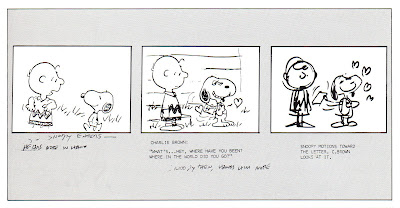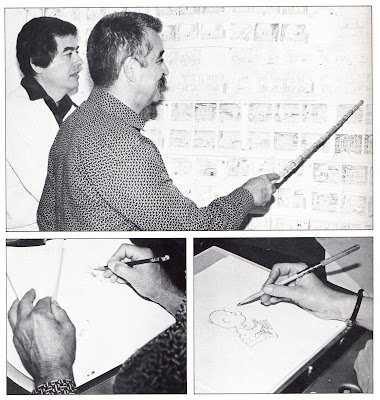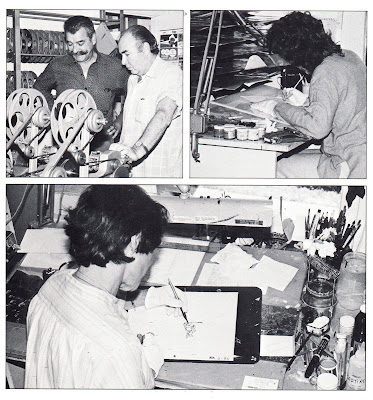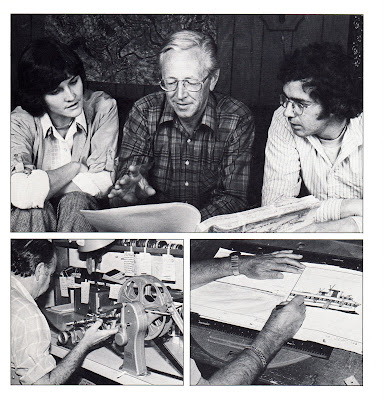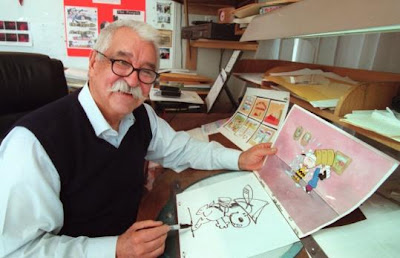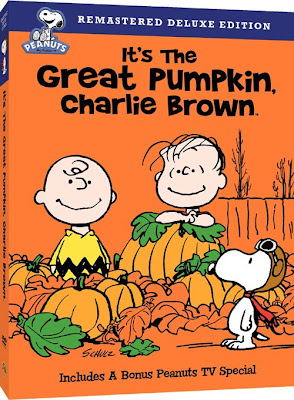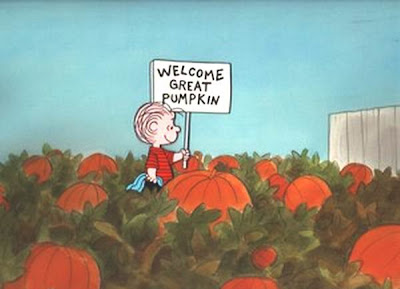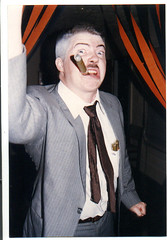Black & White in COLOR #4: The Munsters!
BOO!
Happy Halloween, everybody! That makes it just about prime time for the latest B&WnC installment; this time around showcasing Universal's favorite family of fright The MUNSTERS... in COLOR.
Yeah, sure I know Munsters Go Home was shot in color... but the makeup they used was altered for the big screen and on the green side. Considerably different than these great Frankenstein-accurate shots of Herman from the pilot film.
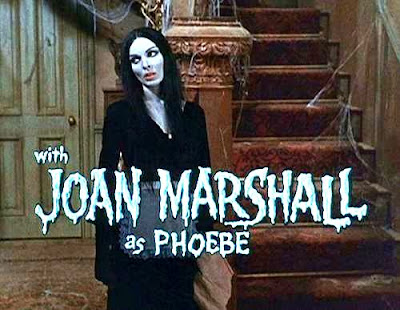 Curiously the first Munsters pilot (also shot in color) did not yet include Yvonne Decarlo in the cast. Instead, the test audience was treated to the e'en more Morticia-esque character Phobe (above) --played by Joan Marshall-- in place of Lily. Joan was probably best known for her dual-role (playing both sexes) in William Castle's Psychotronic soap-opera Homicial (1961). Can't say I'm sorry she didn't do the series but I can say that ol' Joan had some intense bone structure goin' on --She's really more Chas Addams looking than even Carolyn Jones was.
Curiously the first Munsters pilot (also shot in color) did not yet include Yvonne Decarlo in the cast. Instead, the test audience was treated to the e'en more Morticia-esque character Phobe (above) --played by Joan Marshall-- in place of Lily. Joan was probably best known for her dual-role (playing both sexes) in William Castle's Psychotronic soap-opera Homicial (1961). Can't say I'm sorry she didn't do the series but I can say that ol' Joan had some intense bone structure goin' on --She's really more Chas Addams looking than even Carolyn Jones was.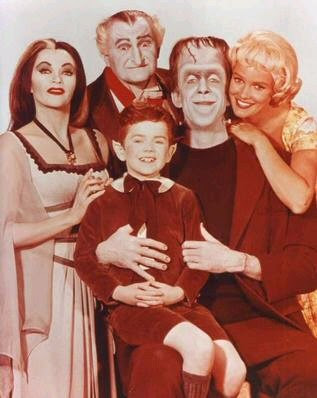 The first season cast including Beverly Owen as Marilyn. After 13 episodes she was replaced as by Pat Priest. (At her own request, might I add -- actually Beverly wanted to quit the show 'cause she was a-missin' her boyfriend who lived back east real REAL bad (according to Al Lewis at least). Eddie's makeup was still evolving at this point... (Butch still has his own hair!)
The first season cast including Beverly Owen as Marilyn. After 13 episodes she was replaced as by Pat Priest. (At her own request, might I add -- actually Beverly wanted to quit the show 'cause she was a-missin' her boyfriend who lived back east real REAL bad (according to Al Lewis at least). Eddie's makeup was still evolving at this point... (Butch still has his own hair!)
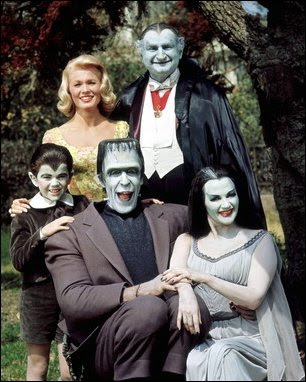 Another great shot of Herman and Lily. (I thought at first this was a painting by Ken Kelley... but it ain't.)
Another great shot of Herman and Lily. (I thought at first this was a painting by Ken Kelley... but it ain't.)

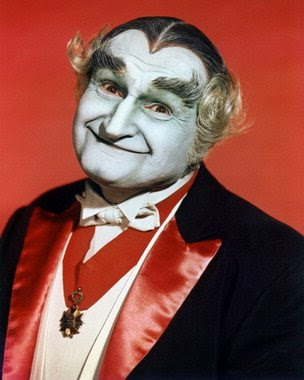
Oh man! Munster colorforms? I always hated that they only came with the one background. (No damn car either... that definitely woulda ticked me off.)
Colorforms were, for the uninitiated, sort of like the earliest form of Flash animation.
Think of it as "Flash manual". Viva, George Barris!
Viva, George Barris!
The fusion of the the Monster craze and the Hot-rod craze in the show's second season gave it -- according to many fans -- a definite edge over the abc's The Addams Family. 
There was only one Drag-U-La (Grandpa's coffin car,) built for the show. There have been several replicas built since 1967, but the original now hangs from the ceiling in the Planet Hollywood restaurant in Atlantic City.
Okay so this one ain't color... but it's still a fun behind the scenes shot with Fred and Yvonne.
Seems like everybody had a band back then...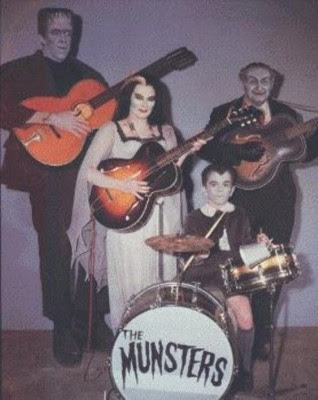 1313 Mockingbird Lane
1313 Mockingbird Lane
The location that the Munsters lived on was constructed largely for the 1946 film So Goes My Love. The two houses used for the film were constructed on stage 12. In 1950 the stock houses from the sound stage were reconstructed on the new Colonial Street set. The future Munster house was at that time "The Maxim House" and was featured in the movie One Desire in (1955).
Universal Studios soon found itself in the pre-fab Victorian home business. These blueprints would be mixed and matched at Universal for the next 20 years. Below is a rare shot of The Munsters house under construction in 1950.

Universal studios kicked ass in the 1960's -- here comes the tram down what is now *choke* Wisteria Lane (the Desperate Housewives set) passing both The Munsters House and the Psycho-type construct from The Ghost and Mr. Chicken. Here's some other nifty shots of of the cast and the house as it evolved over the years.

Years ago (in 1988) I caught one episode of The Munsters Today (directed by Munsters guest-star Bonnie Franklin) and wondered why the house they used was "only a model".
Either it wasn't available or the show didn't have the greenbacks to re-dress the orginal house. (From what I remember I'd have to vote for the latter... yeech! That show was like a high-school play version of the B & W show.) 1967 Universal Post Cards
1967 Universal Post Cards
The year after the Musters wrapped production Universal released a set of postcards that shows what appears to be Grandpa's TV dungeon set with a Herman/Frankenstein Monster dummy strapped to the examination table. Other shots showed a Phantom of the Opera-clone menacing both the dummy and a somewhat grabby tourista. Way too cool!


 Lastly, these two pics look like tourist fotos taken of the same set, but they blow up big if you click on 'em!
Lastly, these two pics look like tourist fotos taken of the same set, but they blow up big if you click on 'em! Time o' yer life, eh kids?
Time o' yer life, eh kids?
That's about it for this year so Happy Halloween folks!
--and big thanks go out to all things Universal Studios, past and present.
Labels: Al Lewis, Butch Patrick, Color, Fred Gwynne, George Barris, Hot Rods, Mockingbird Lane, The Munsters, Universal Studios, Yvonne DeCarlo



